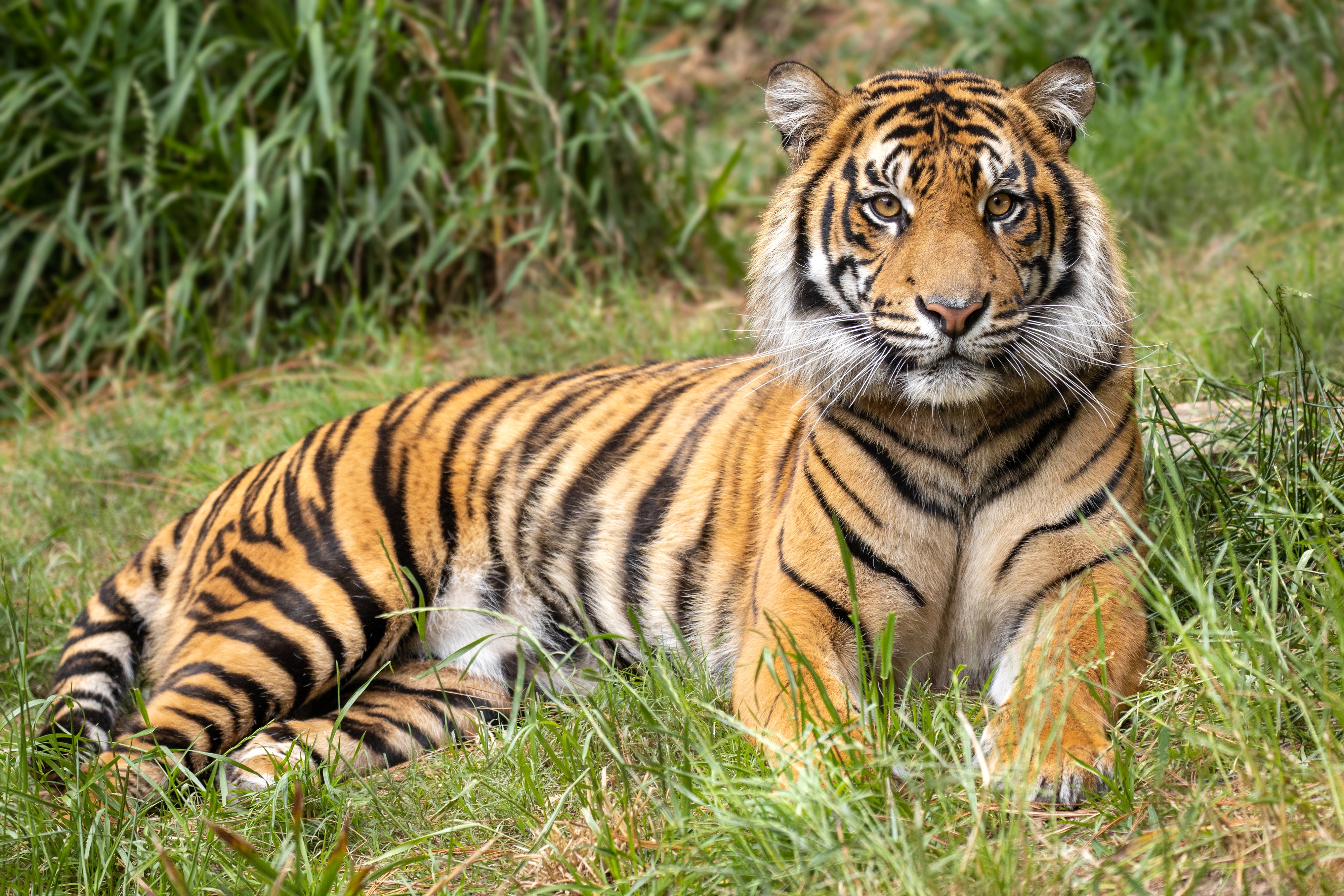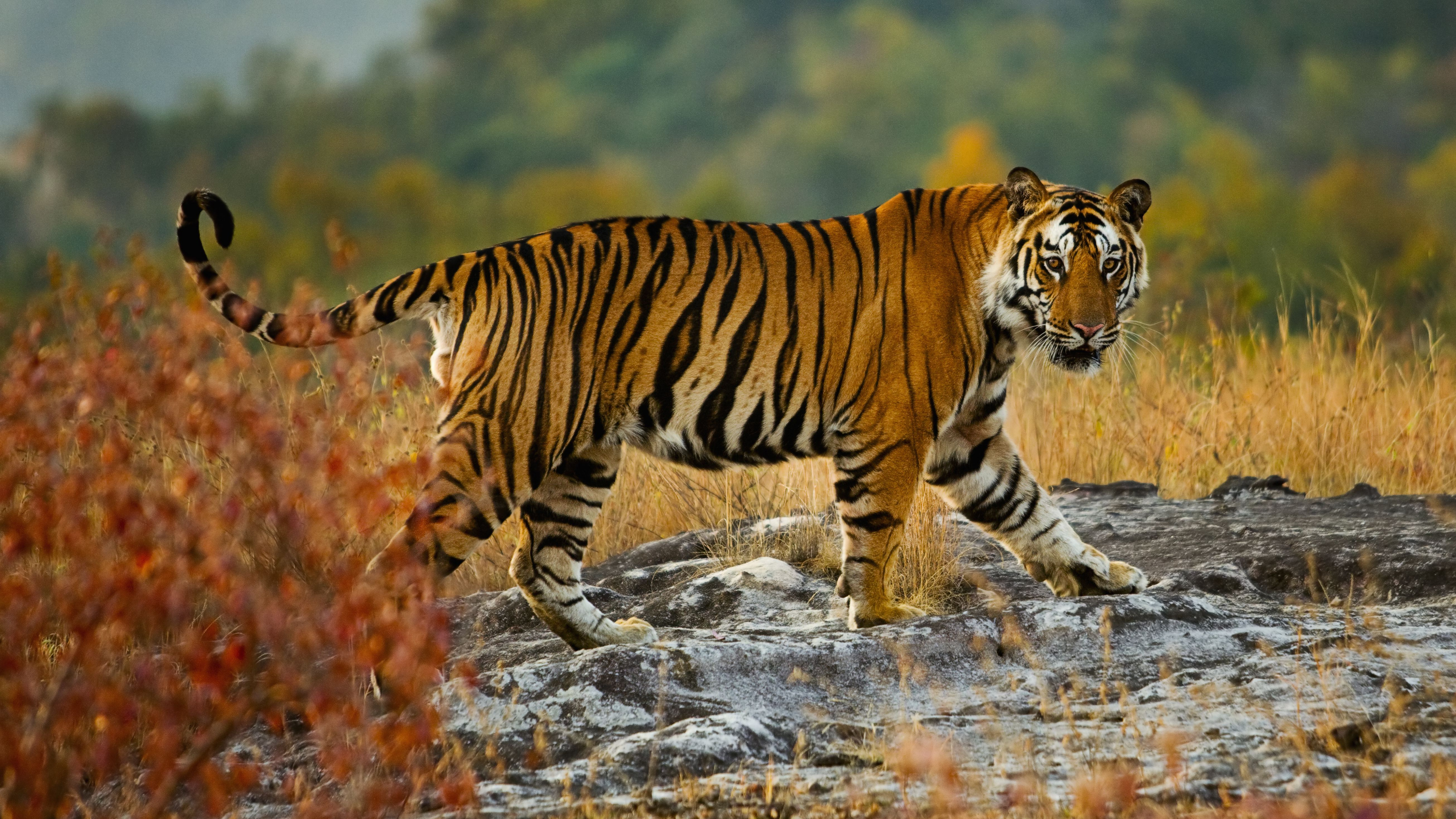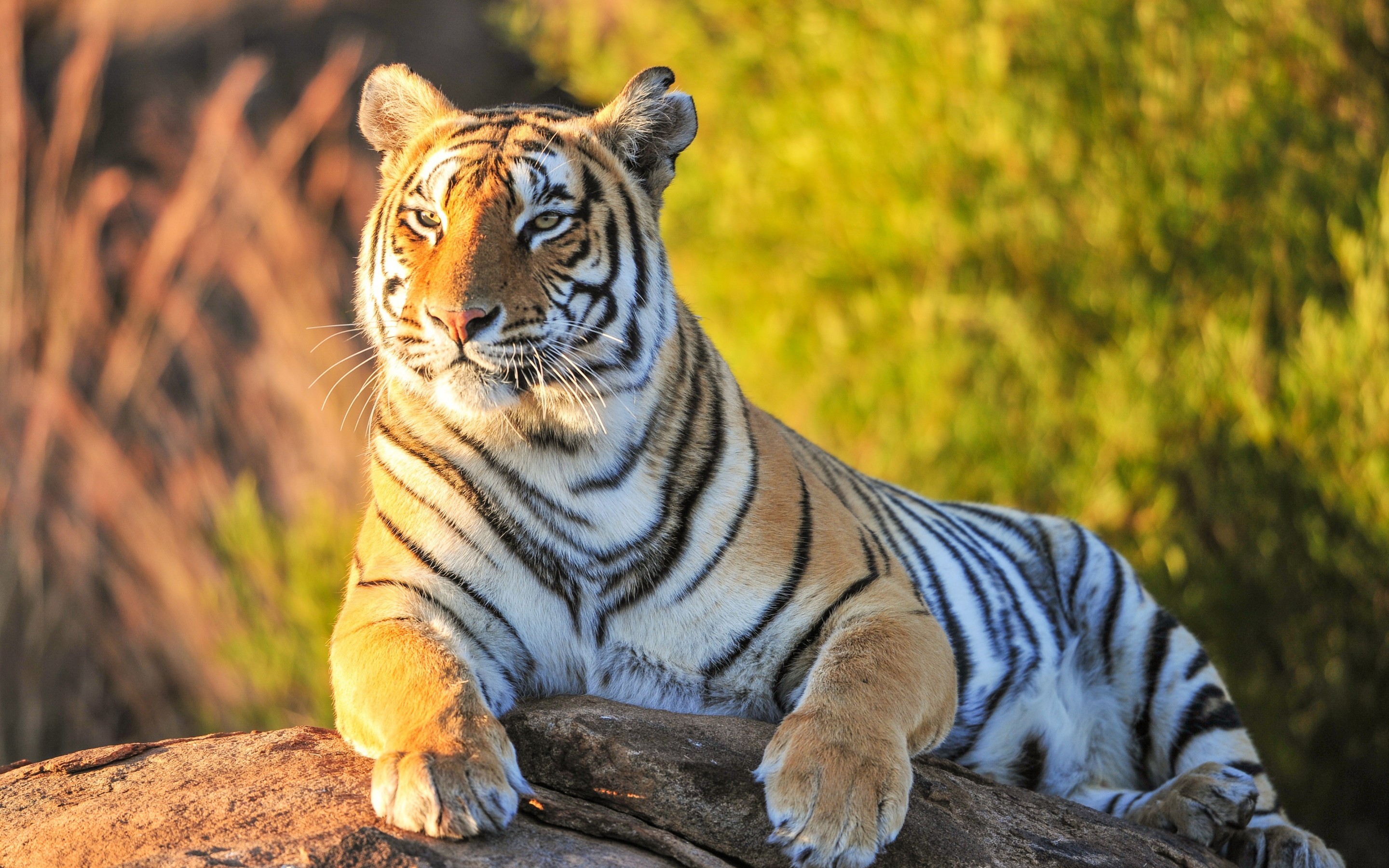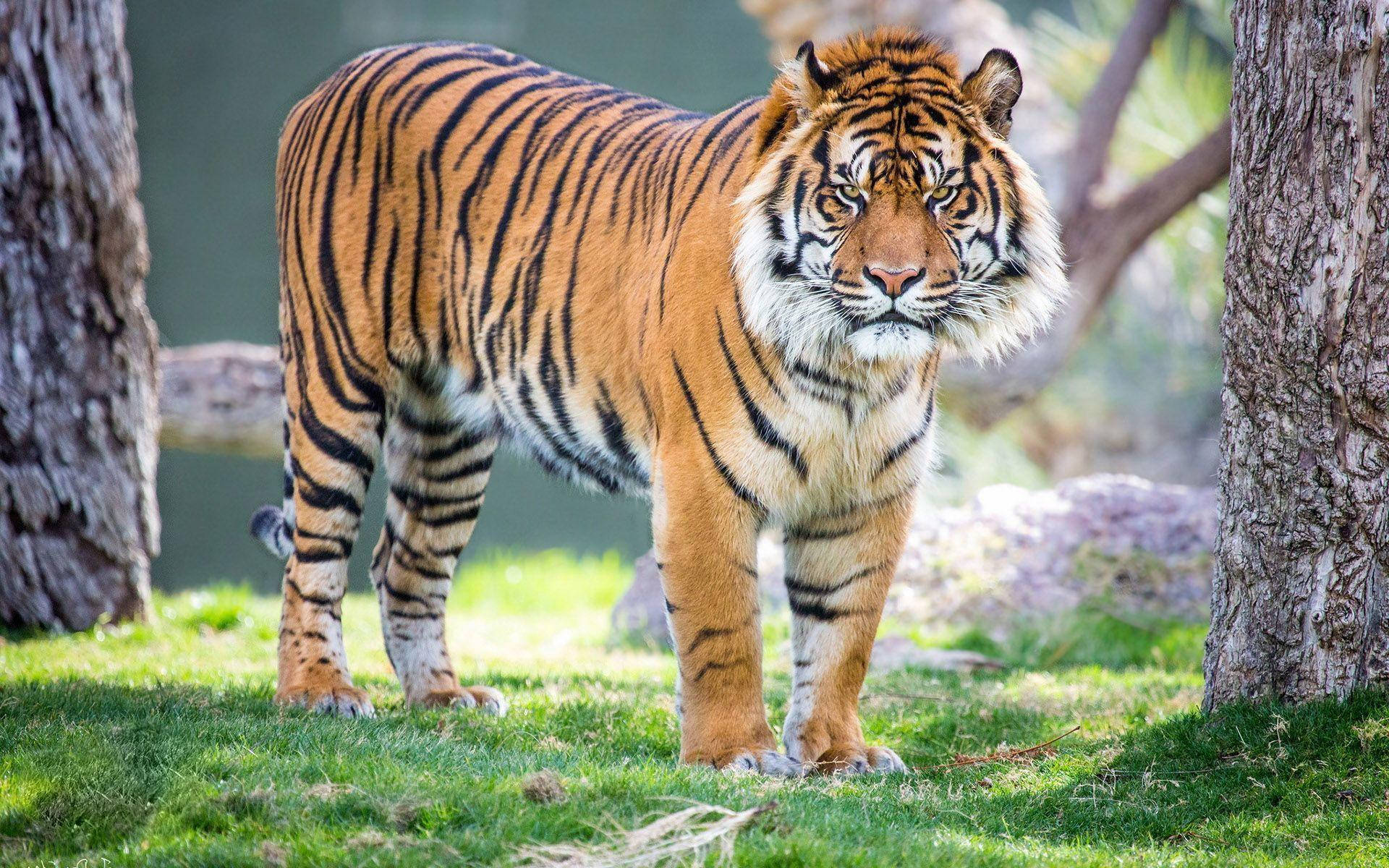
The tiger, known scientifically as Panthera tigris, stands as one of the most captivating and majestic creatures to roam the Earth. With its awe-inspiring presence and unparalleled beauty, the tiger has long held a special place in human culture, mythology, and conservation efforts. Tigers are the largest of all big cats, with some individuals weighing up to 660 pounds (300 kilograms) and measuring over 10 feet (3 meters) in length from nose to tail.

These magnificent predators are characterized by their striking orange coat, accented by black stripes that are as unique as fingerprints, providing effective camouflage in their natural habitat. Tigers are solitary creatures, typically roaming vast territories in search of prey, which primarily consists of deer, wild boar, and other large mammals.
There are six extant subspecies of tigers, each with its own distinct characteristics and habitat preferences, including the Bengal, Siberian, Indochinese, Malayan, South China, and Sumatran tigers. Once ranging across much of Asia, tigers now occupy only a fraction of their former territory, primarily due to habitat loss, poaching, and human-wildlife conflict. Among the subspecies, the Bengal tiger (Panthera tigris tigris) is the most numerous, inhabiting the dense forests and mangrove swamps of India, Bangladesh, Nepal, and Bhutan. The Siberian tiger (Panthera tigris altaica), also known as the Amur tiger, is the largest subspecies and is found in the forests of eastern Russia and parts of China and North Korea. Indochinese tigers (Panthera tigris corbetti) inhabit the forests and grasslands of Southeast Asia, including Cambodia, Laos, Myanmar, Thailand, and Vietnam.

Malayan tigers (Panthera tigris jacksoni) are found primarily in the southern tip of the Malay Peninsula, where they navigate through dense rainforests and mangrove swamps. South China tigers (Panthera tigris amoyensis) are the most critically endangered of all tiger subspecies, with possibly fewer than 20 individuals remaining in the wild, mainly in fragmented habitats of southern China. Sumatran tigers (Panthera tigris sumatrae) are native to the island of Sumatra in Indonesia, where they inhabit lowland forests and occasionally venture into higher elevations. Tigers are apex predators, playing a crucial role in maintaining the balance of ecosystems by regulating prey populations and preventing overgrazing. Despite their formidable hunting prowess, tigers are also vulnerable to extinction, with their populations declining rapidly over the past century. One of the primary threats to tiger populations is habitat loss, as human activities such as deforestation, urbanization, and agricultural expansion continue to encroach upon their natural habitats. Poaching remains a significant threat to tigers, driven by the demand for their body parts in traditional Asian medicine and the illegal wildlife trade. Tiger bones, skins, and other body parts are highly sought after for their supposed medicinal properties, despite there being no scientific evidence to support their efficacy.

In addition to poaching, tigers often fall victim to retaliatory killings by humans, especially in areas where conflicts arise over livestock depredation or perceived threats to human safety. Conservation efforts aimed at protecting tigers and their habitats have been implemented by governments, non-profit organizations, and local communities across their range. The establishment of protected areas such as national parks, wildlife reserves, and sanctuaries has helped to provide safe havens for tigers to roam and breed without disturbance. Anti-poaching patrols and law enforcement initiatives have been crucial in combating illegal hunting and trade of tiger parts, resulting in the arrest and prosecution of poachers and traffickers. Conservationists also work to address human-tiger conflicts through measures such as community-based initiatives, habitat restoration, and the implementation of predator-proof enclosures for livestock. Despite these efforts, the future of tigers remains uncertain, with many populations still facing threats from habitat fragmentation, poaching, and climate change. Climate change poses additional challenges to tiger conservation by altering their habitats, disrupting prey populations, and increasing the frequency of extreme weather events. Rising sea levels and changes in precipitation patterns can inundate low-lying tiger habitats, while deforestation and land degradation further exacerbate the loss of suitable habitat.
To mitigate the impacts of climate change on tigers and their habitats, conservationists advocate for the preservation of large, interconnected landscapes that allow for natural movement and adaptation. Captive breeding programs play a vital role in maintaining genetic diversity and providing a safety net for endangered tiger populations, with the eventual goal of reintroducing individuals into the wild. Zoos and breeding centers around the world participate in collaborative efforts to manage captive tiger populations and share knowledge and resources to support conservation initiatives. Education and outreach programs are essential for raising awareness about the plight of tigers and inspiring action to protect them and their habitats. By engaging with local communities, schools, and policymakers, conservationists aim to foster a sense of stewardship and encourage sustainable practices that benefit both people and wildlife. Ecotourism has emerged as a promising avenue for generating revenue and incentivizing the conservation of tiger habitats, providing economic opportunities for local communities while promoting wildlife conservation. Responsible ecotourism practices prioritize the well-being of tigers and their habitats, ensuring that tourism activities are conducted in a sustainable and ethical manner. Observing tigers in their natural environment can be a transformative experience, offering visitors a profound appreciation for these magnificent creatures and the ecosystems they inhabit. Tigers play a symbolic role in many cultures and are revered as symbols of strength, courage, and spiritual power.

In Hindu mythology, the tiger is associated with the goddess Durga, who rides upon a tiger and embodies divine feminine energy and protection. In Chinese culture, the tiger is one of the twelve zodiac animals and is believed to symbolize bravery, competitiveness, and good fortune. Tigers have also been featured prominently in art, literature, and popular culture, inspiring awe and fascination among people around the world. From ancient cave paintings to contemporary films and novels, tigers continue to captivate the human imagination with their enigmatic presence and untamed beauty. Conservation efforts to save the tiger extend beyond national borders, with international agreements and collaborations aimed at protecting this iconic species.

The Convention on International Trade in Endangered Species of Wild Fauna and Flora (CITES) regulates the trade of tiger parts and products to prevent illegal trafficking and ensure the survival of wild tiger populations. The Global Tiger Initiative (GTI), launched in 2010 by the World Bank and conservation organizations, aims to double the number of wild tigers by 2022 through coordinated conservation efforts and funding support. The St. Petersburg Declaration on Tiger Conservation, adopted by the tiger range countries in 2010, reaffirmed their commitment to conserving wild tiger populations and their habitats.

Tiger range countries, including India, Russia, Nepal, and others, have pledged to work together to address common challenges and implement strategies for tiger conservation. Innovative technologies such as camera traps, satellite tracking

